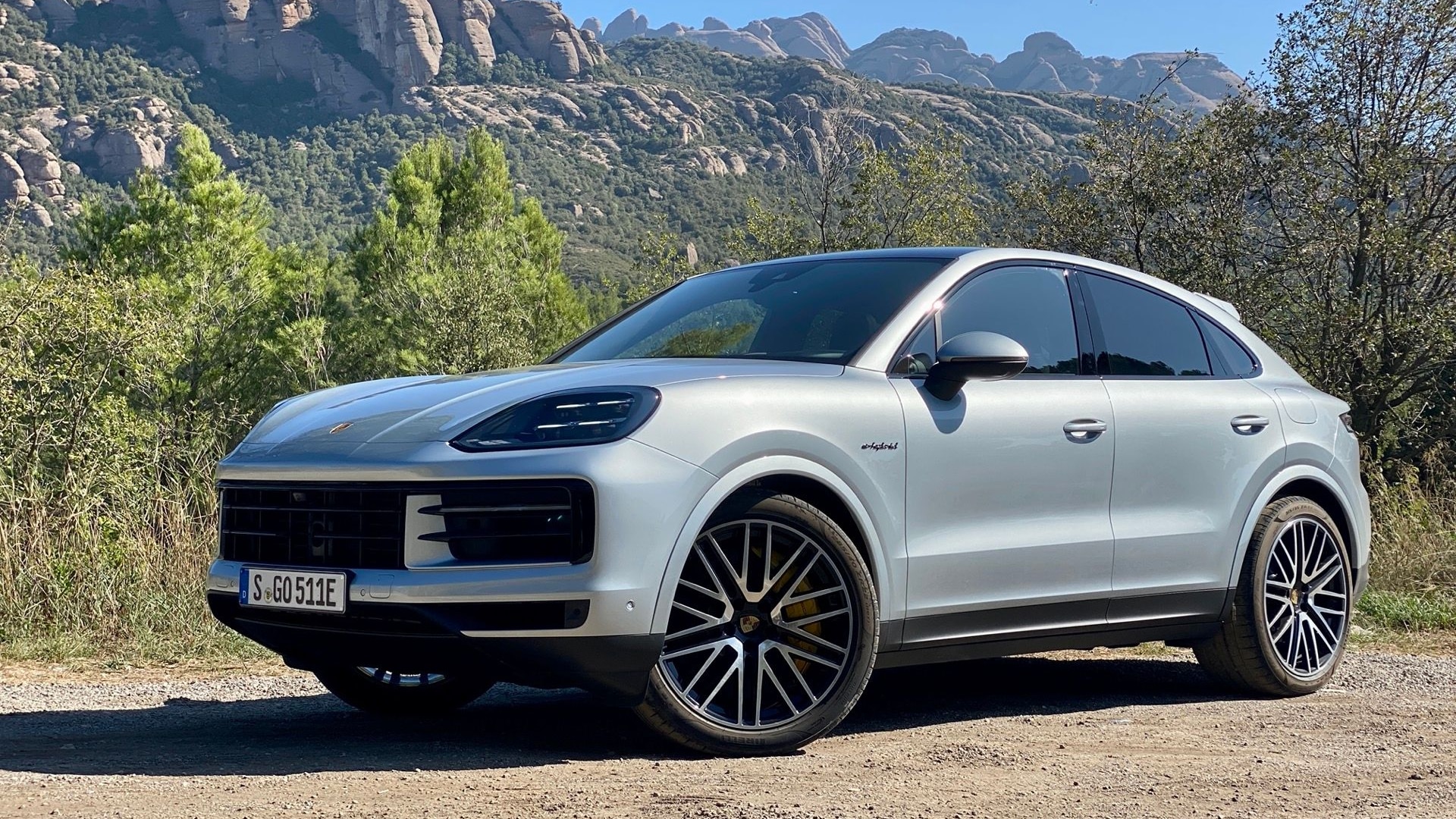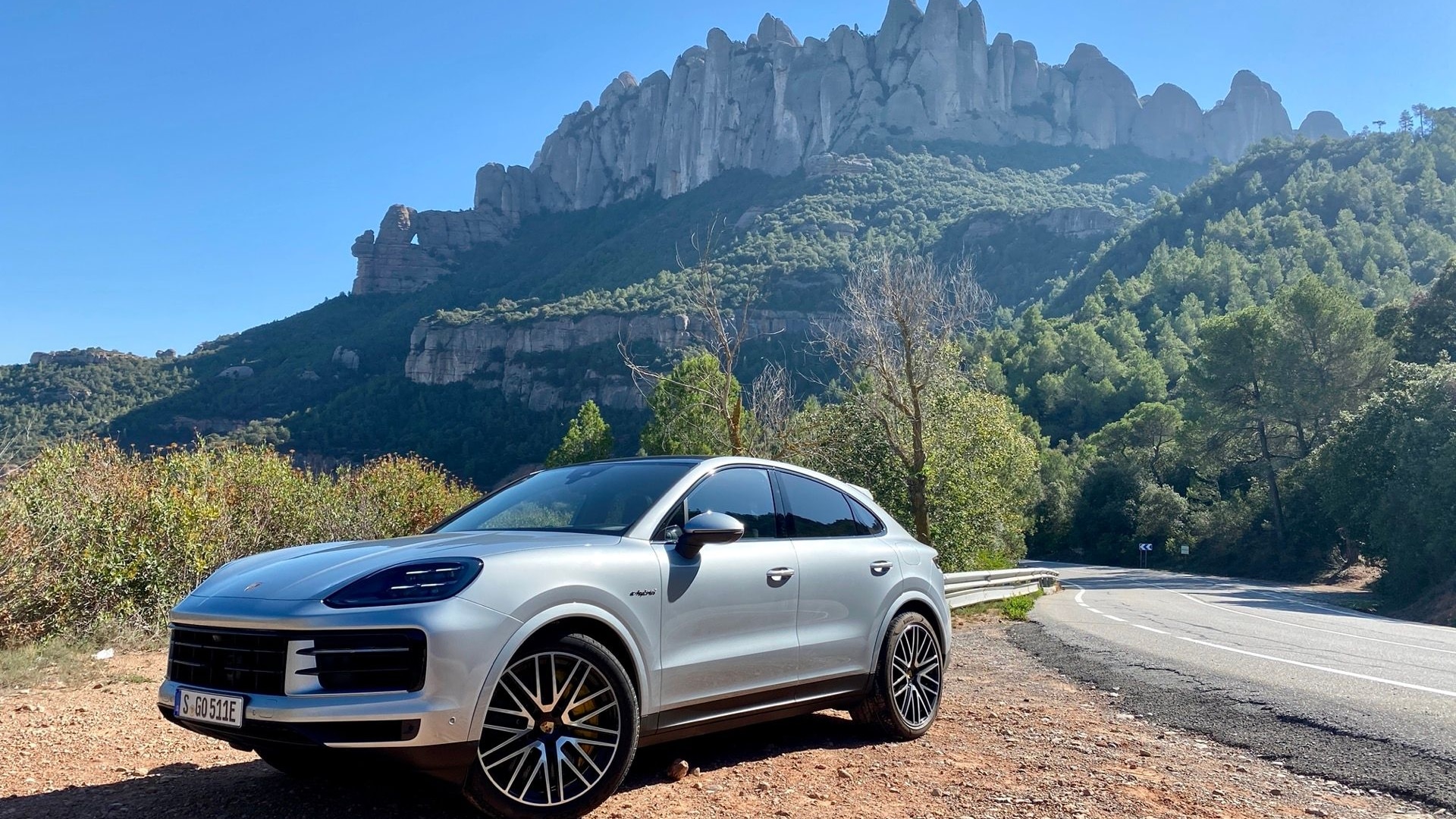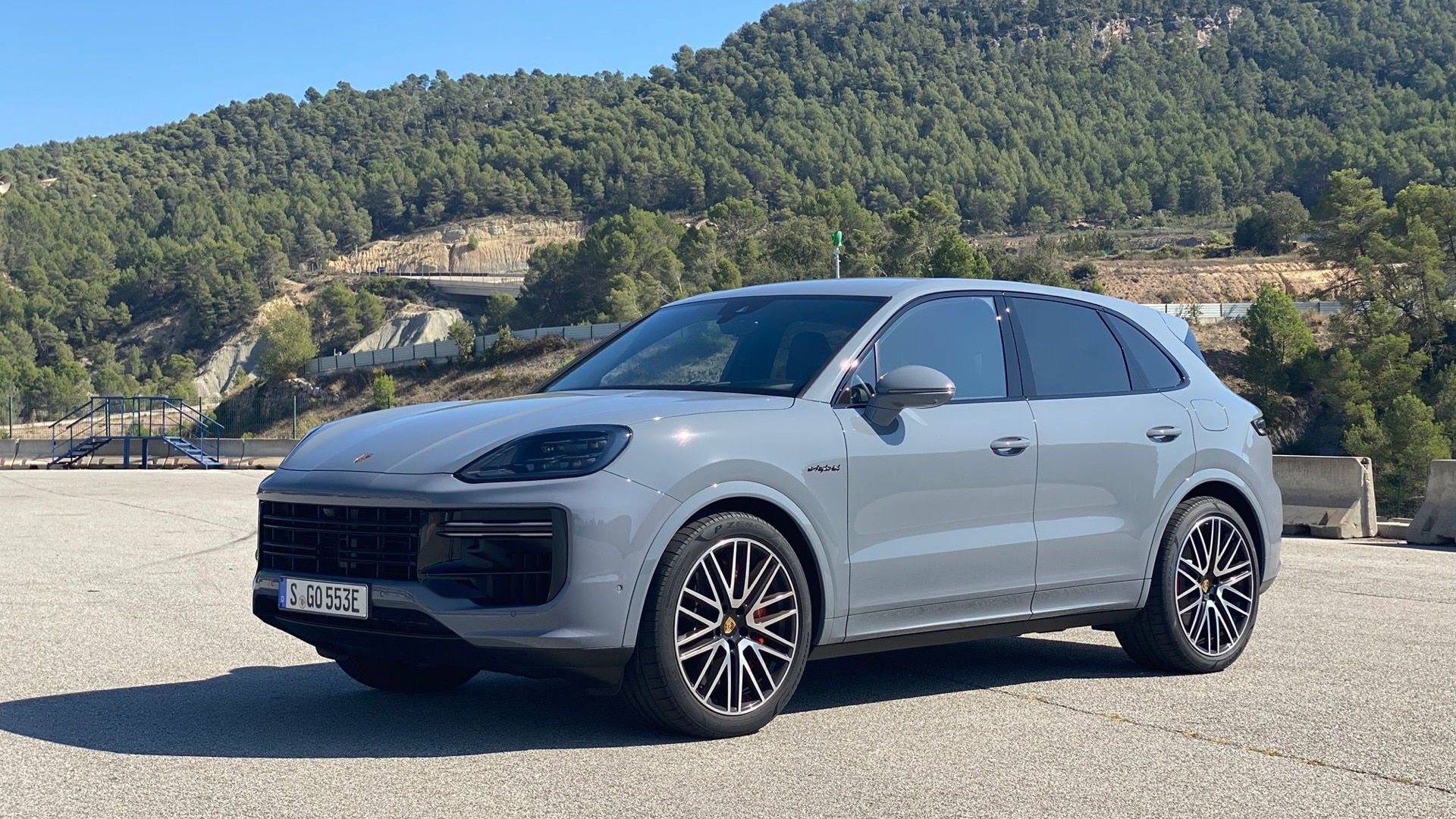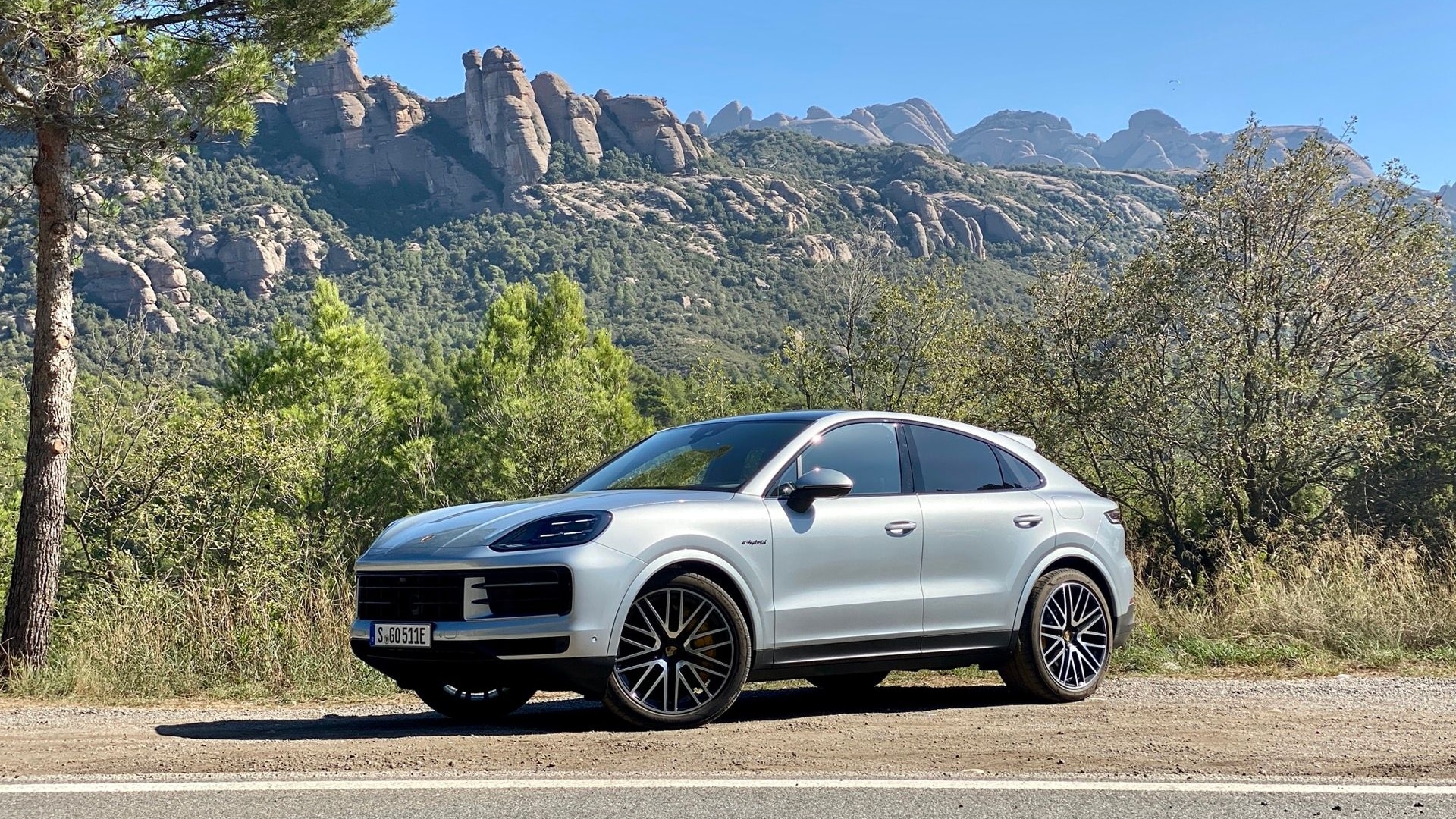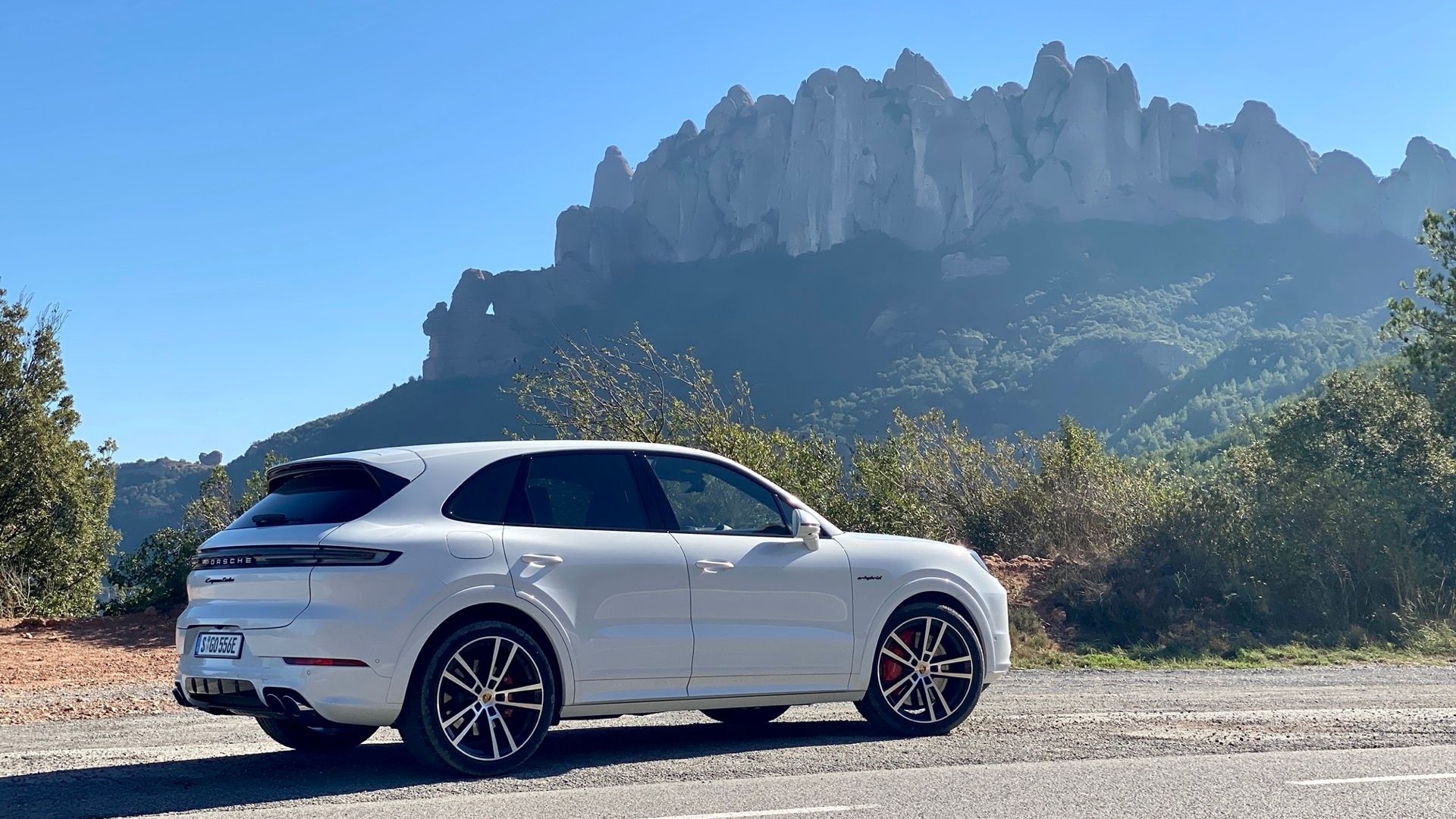When considering the 2024 Porsche Cayenne Turbo, the only question is how you want your V-8: Natural or supplemented?
There are three ways to get the new Porsche twin-turbo 4.0 V-8 in the overhauled 2024 Cayenne: The Cayenne S eases in the V-8 at 468 hp and 442-lb ft of torque; the Cayenne Turbo E-Hybrid’s V-8 is tuned to 591 hp and 590 lb-ft; and the Turbo GT’s V-8 makes 650 hp and 626 lb-ft. By my count, that’s the most V-8s offered on a single non-truck model for 2024.
Such an array can’t last.
2024 Porsche Cayenne Turbo E-Hybrid
How Porsche changed the V-8 in the 2024 Cayenne
Porsche heavily revised the twin-turbo 4.0-liter V-8 with this major refresh of the third-gen Cayenne to increase power and reduce emissions. But the V-8 in the range-topping Turbo GT won’t be supplemented with electric power and therefore won’t be sold in Europe and most Asian markets.
The changes to the V-8 are, ahem, manifold. Dr. Christoph Oerleke, product manager of the Cayenne, explained to Motor Authority that the changes include higher direct injection pressure that optimizes combustion to not leave residual fuel on the cylinder walls, and variable valve lift that joins variable valve timing to improve efficiency in the thermal process. Essentially, the revised V-8 squeezes more energy out of each drop of fuel. The new electronic wastegates in the turbos are much more responsive so the V-8 spews less emissions.
The improved engine management enabled Porsche to swap out twin-scroll turbos (except in the GT) for more compact single-scroll turbochargers with better performance when the engine nears its 6,800-rpm rev limit.
There’s no more cylinder deactivation for the Cayenne Turbo V-8 as well. The 2024 Cayenne Turbo-E relies on more electric power from a larger 25.9-kwh battery pack (up from 17.9 kwh) and more potent 130-kw electric drive unit (from 100 kw). The only time the Turbo E-Hybrid relies on the twin-turbo V-8 alone is at speeds above 84 mph.
When I asked how often people are driving that fast, Dr. Oerleke was quick to reply, “In Germany they do.”
His smile suggested the Germans flirt with the Turbo E’s top speed of 183 mph, too.
2024 Porsche Cayenne Turbo E-Hybrid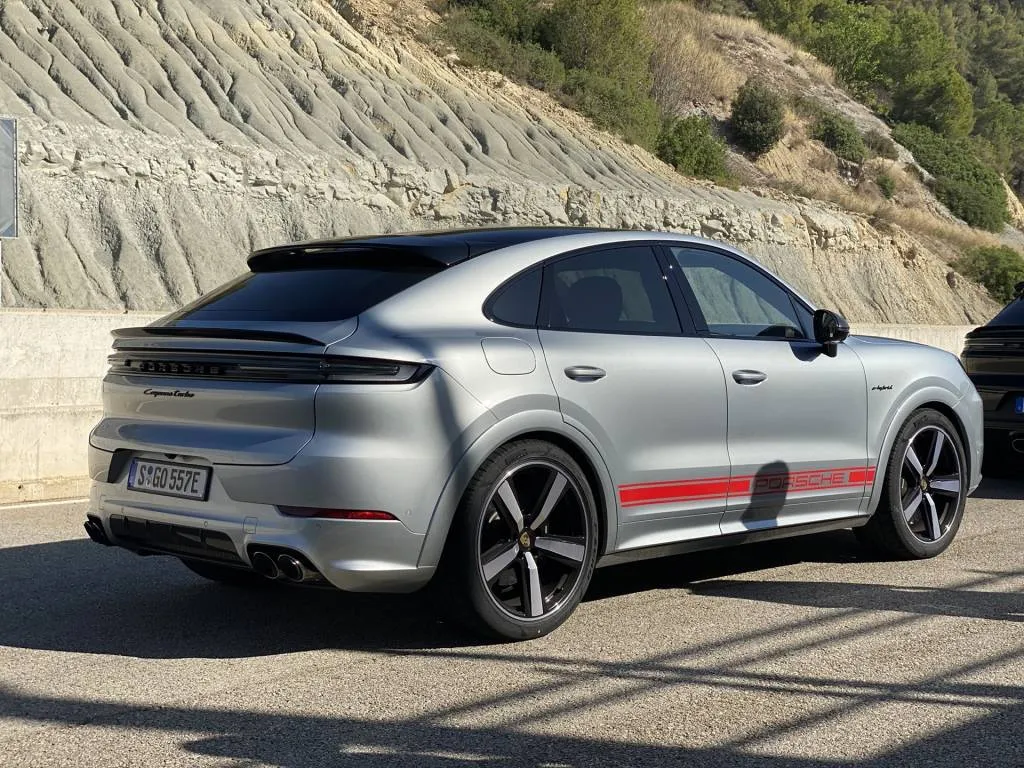
Tracking the 2024 Cayenne Turbo E-Hybrid
On a racetrack outside Barcelona, I tried my best to act like a German.
The Parcmotor de Castelloli circuit rises out of the spiny shadow of Montserrat Mountain National Park. The track was cut out of an old quarry in a hillside, like a modest Sonoma Raceway with less dramatic grade changes. It’s narrower, but instead of all the blind bends and tight hairpins of Sonoma, this track stretches out longer with five straights, the better to showcase the Cayenne Turbo E’s strengths.
I tracked a Turbo E-Hybrid that Porsche equipped with $46,000 worth of extras to approximate the Turbo E-Hybrid GT Pack sold in Europe and other markets forsaken by the Turbo GT. Upgrades included rear-wheel steering, active anti-roll bars (Porsche calls them Dynamic Chassis Control), 22-inch staggered wheels (10.5 inches up front, 11.5 in back) with low profile P Zero Corsa tires (285/40 front, 315/35 rear), and perhaps most importantly, carbon-ceramic brakes. A note about those Porsche ceramic composite brakes (PCCBs): they cost nearly $10,000 extra on the Turbo E but supply is constrained.
Sold only in the sleeker, more attractive Coupe body style, the Turbo GT weighs nearly 700 pounds less than the Turbo E-Hybrid Coupe’s bulky 5,719-pound curb weight. This is one reason the Turbo GT burns to 60 mph in 3.1 seconds.
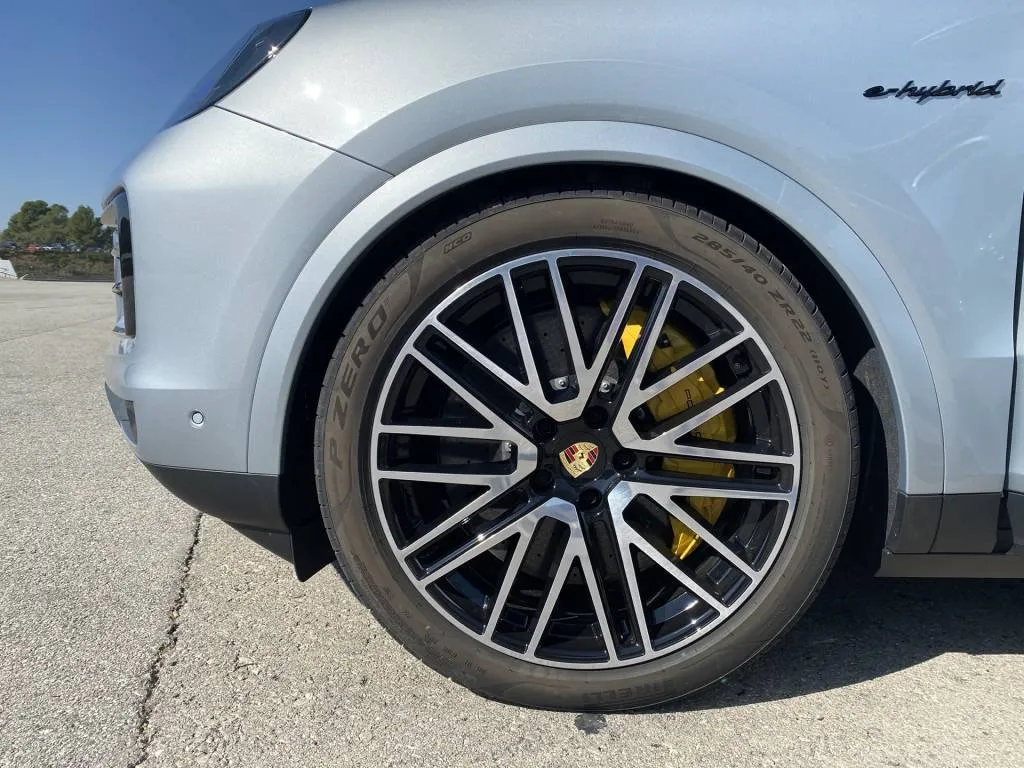
2024 Porsche Cayenne Turbo E-Hybrid
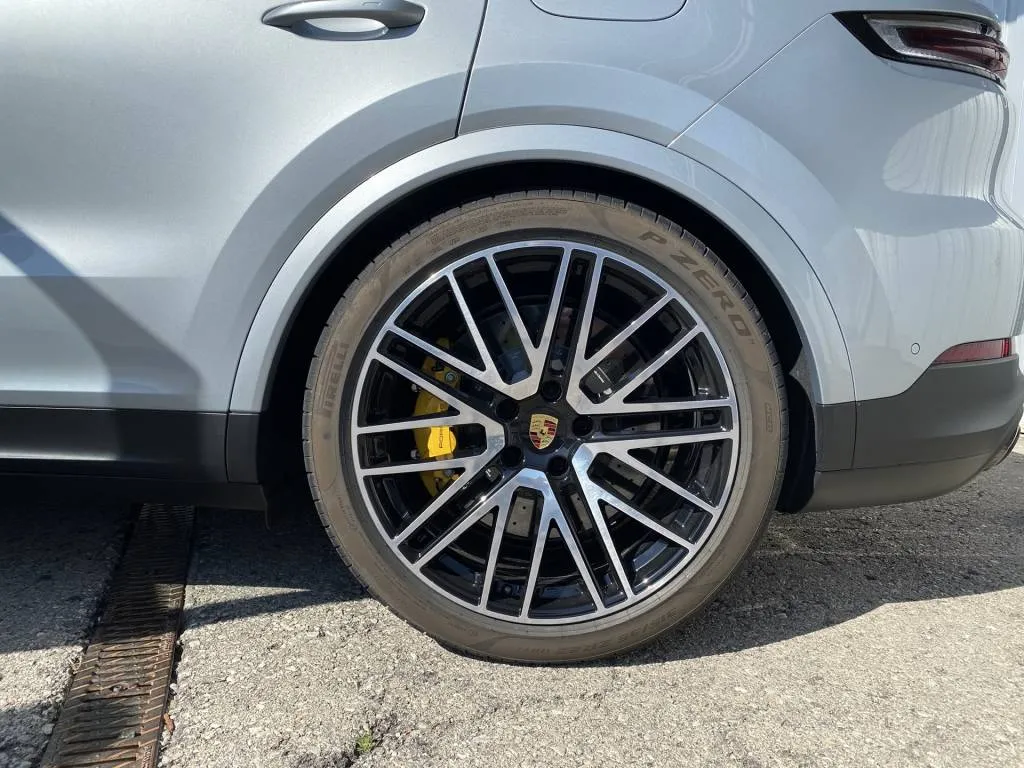
2024 Porsche Cayenne Turbo E-Hybrid
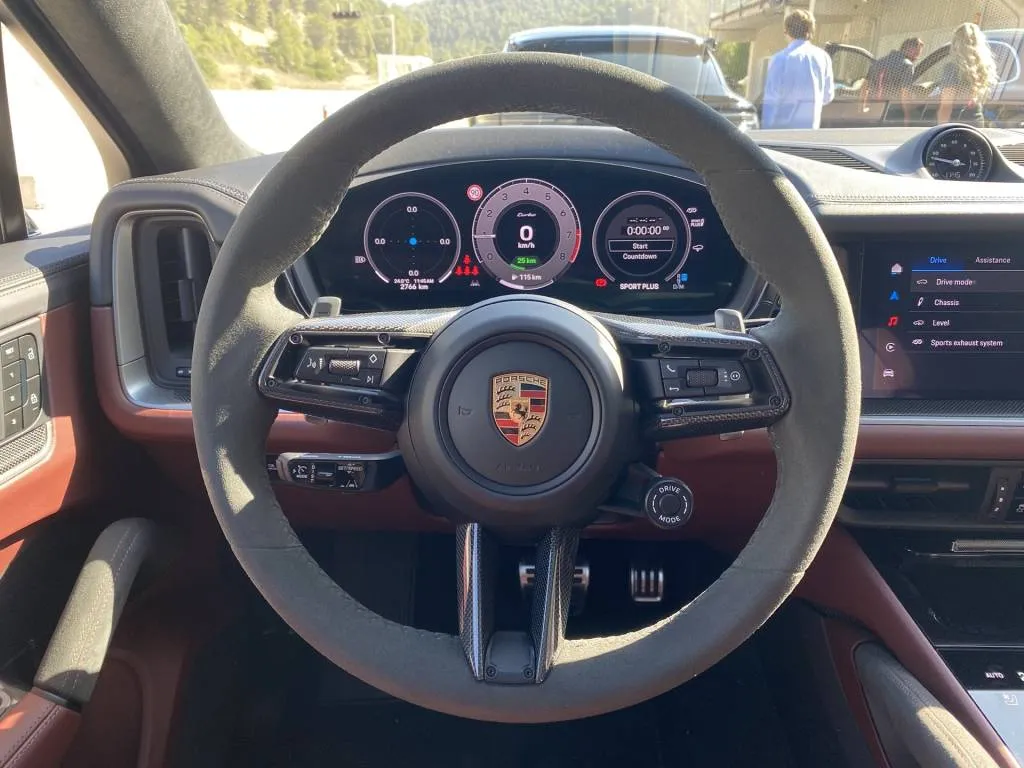
2024 Porsche Cayenne Turbo E-Hybrid
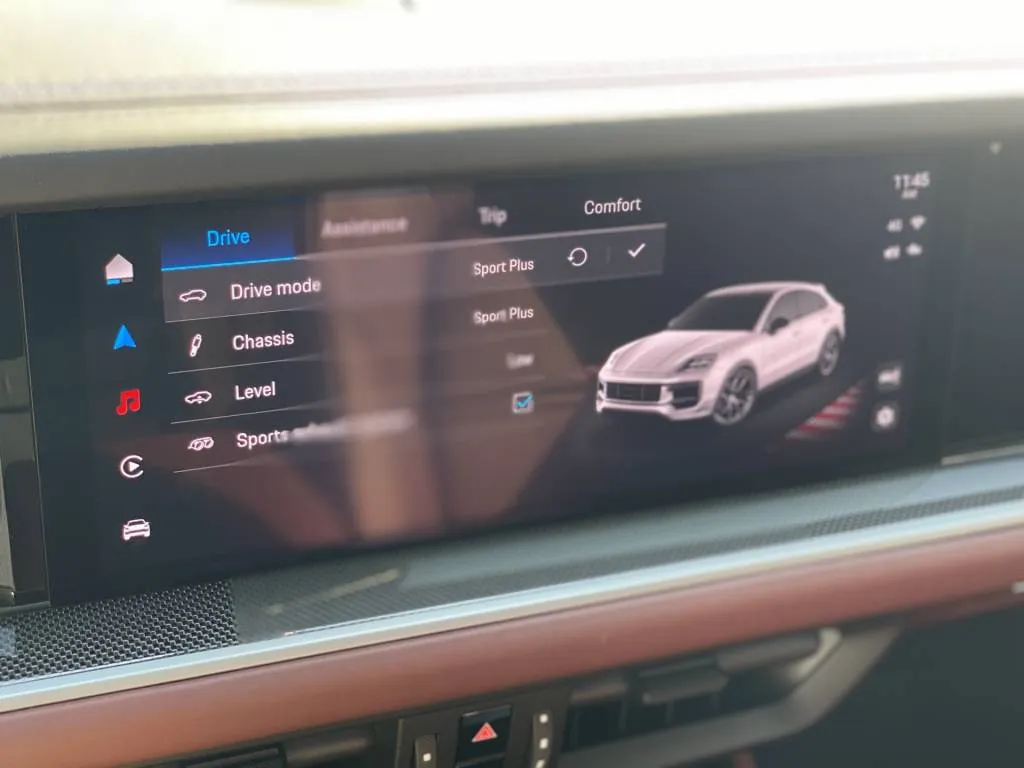
2024 Porsche Cayenne Turbo E-Hybrid
The Turbo E-Hybrid hits 60 mph in 3.5 seconds, but it makes up for it in the next leg with a quarter-mile time of 11.7 seconds, just one-tenth off the Turbo GT. That’s because the battery and motor combo combine for an additional 174-hp and 339 lb-ft to a total system output of 729 hp and 700 lb-ft, making the Turbo E-Hybrid the most powerful Cayenne ever.
In Sport+ mode with the traction control dialed down and the air suspension pumped firm, the Cayenne Turbo E shrugged off its weight in the long straights. Some of that V-8 engine sound might have been amplified, but it was no less visceral. It wailed. I could have used paddle shifters to take control of the 8-speed automatic transmission sourced from ZF, but like other Porsche transmissions, it was telepathic and I had my hands full focusing on the track.
The ample high-end power helped me catch up to the 911 Turbos setting the pace on the straights, but elsewhere the Turbo E could have benefitted from a better driver. Braking hard before a turn, all the extra weight in the Turbo E-Hybrid didn’t upset the balance, thanks in part to a new two-chamber air suspension that replaces the old three-chamber setup. Instead of one valve controlling the damping, the new system uses two valves to separately control compression and rebound. Porsche says that the rebound stroke remains nearly the same, but the compression side has much greater control.
In practice, the front end didn’t dip and throw the weight forward to pitch the bulky SUV off line. The carbon-ceramic brakes clap 10-piston front calipers on massive 17.3-inch front rotors (4-piston, 16.1-inch rears) and two hours of running the same four Cayennes with only short changeover breaks in between resulted in no issues. The issue might be patience; if you order a Turbo E-Hybrid with the PCCBs now, it might be delayed a month or two due to supply issues, Porsche four-door rep Calvin Kim told me.
The Turbo E’s extra weight and overall heft was more present on the long esses, where even the active anti-roll bars couldn’t offset physics. The tester had nearly all of the GT’s upgrades within an inch: the Turbo GT has a lowered ride height and a ground clearance that measures 6.8 inches compared to 7.8 inches on other variants. It’s surely the better track Cayenne, but for everyday performance and a Porsche kind of practicality, the Turbo E hits the sweet spot.
2024 Porsche Cayenne Turbo E-Hybrid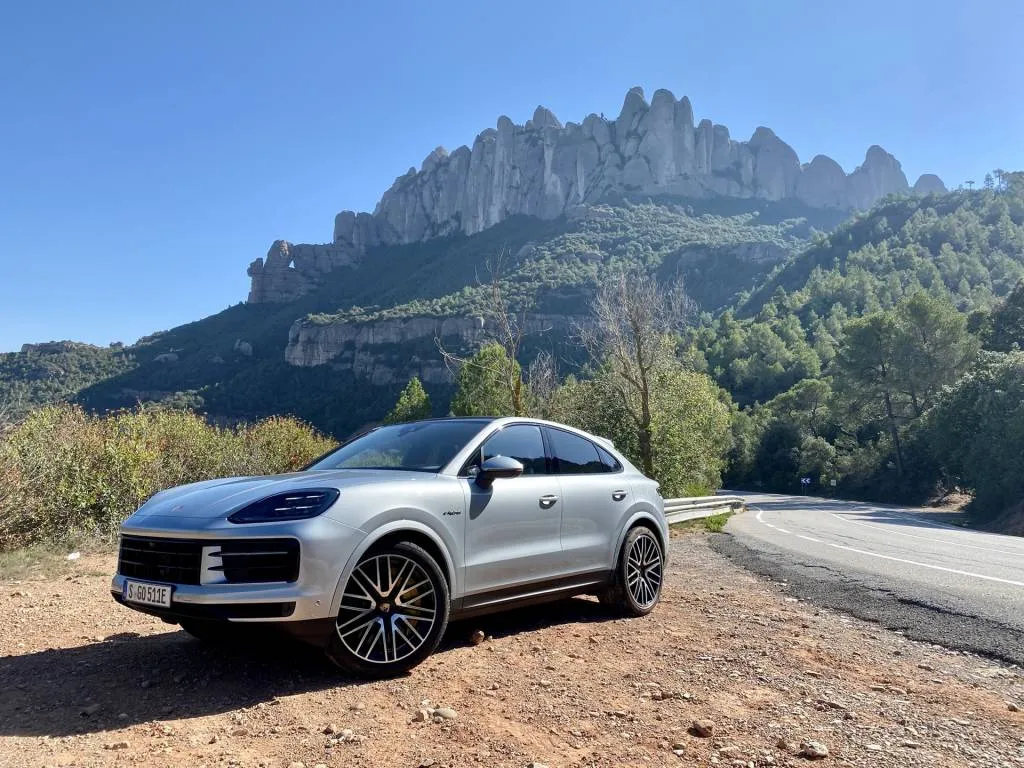
2024 Porsche Cayenne Turbo E-Hybrid everyday driving
Away from the whirlwind of the track, in the roads looping around and under Montserrat—like California’s Angeles Crest Highway except with better views, tighter turns, and far less traffic—the changes to the 2024 Cayenne Turbo E became more apparent and better appreciated. Porsche claims this refresh is the most significant single change ever in the 22 years of the Cayenne, and the balance between performance and practicality in everyday driving proved it.
Porsche encourages the use of the larger battery pack and its motor, sandwiched between the V-8 and the 8-speed, on every start up. It defaults to E-Power, the electric mode of five selectable modes.
2024 Porsche Cayenne S E-Hybrid 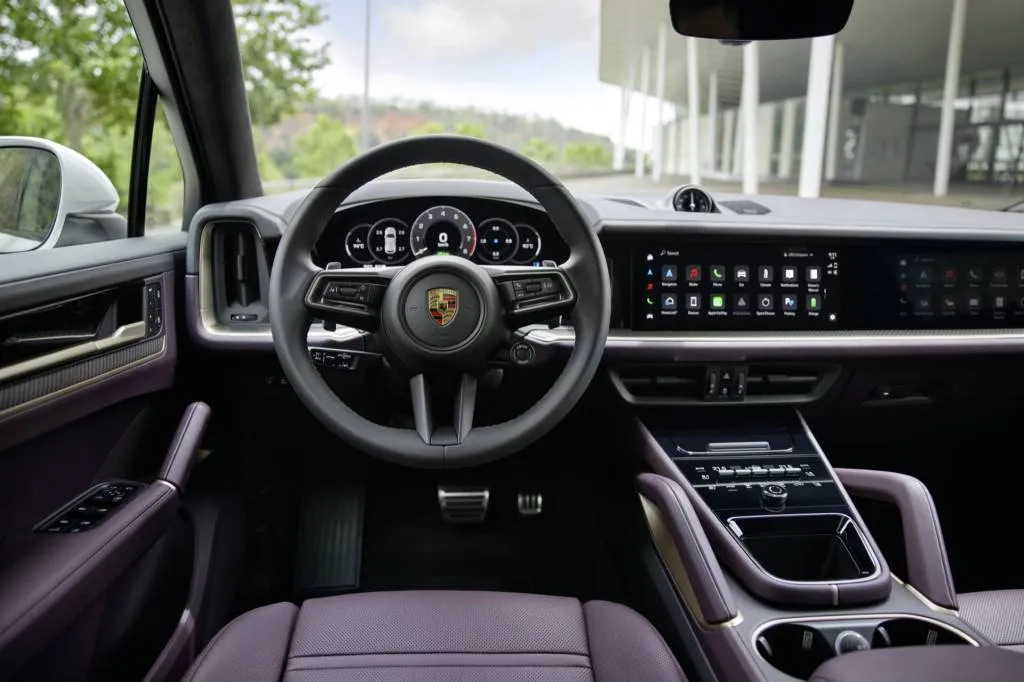
Electric power in the 2024 Porsche Cayenne Turbo E-Hybrid
Even with the default EV mode, Porsche understates the presence of the electrified powertrain. There’s a power delivery gauge in the new 12.6-inch digital instrument cluster that replaces an analog unit, and the driver can enhance it or minimize it with the seven different display options. A graphic in the 12.3-inch touchscreen shows engine and motor power splits, but mostly all the complex machinations happen without the driver noticing, unless seeking it out.
There’s no regenerative brake setting, but it’s always there as soon as you lift off the throttle. It’s smoother than the prior generation but not seamless. It worked like the system in the Porsche Taycan electric sedan: as soon as I touched the actual brake, there was more grab as it transitioned from motor to friction braking.
One of the more interesting readouts in the multitude of new info is an E-Trip meter. On one loop covering 39.9 miles, 11.7 miles were completed in electric power only at a rate of 32.3 kwh per 100 km. That’s about 1.9 miles per kwh. In terms of efficiency, that’s not so good. But I wasn’t driving it for efficiency and it’s more efficient than using a gas engine.
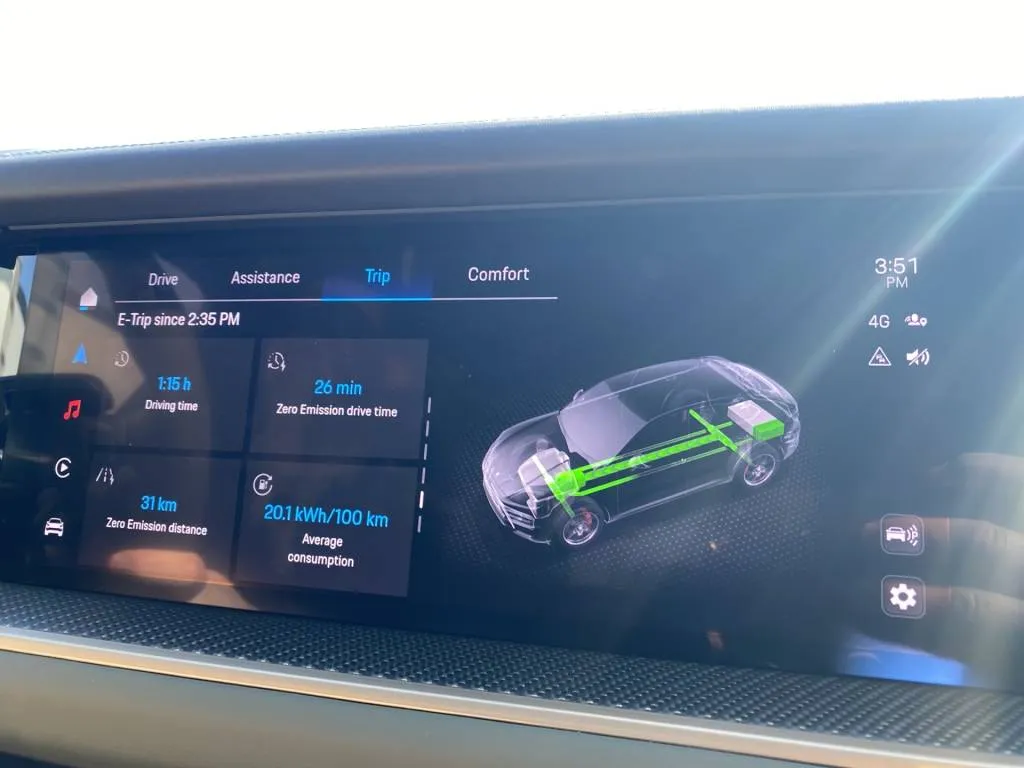
2024 Porsche Cayenne Turbo E-Hybrid
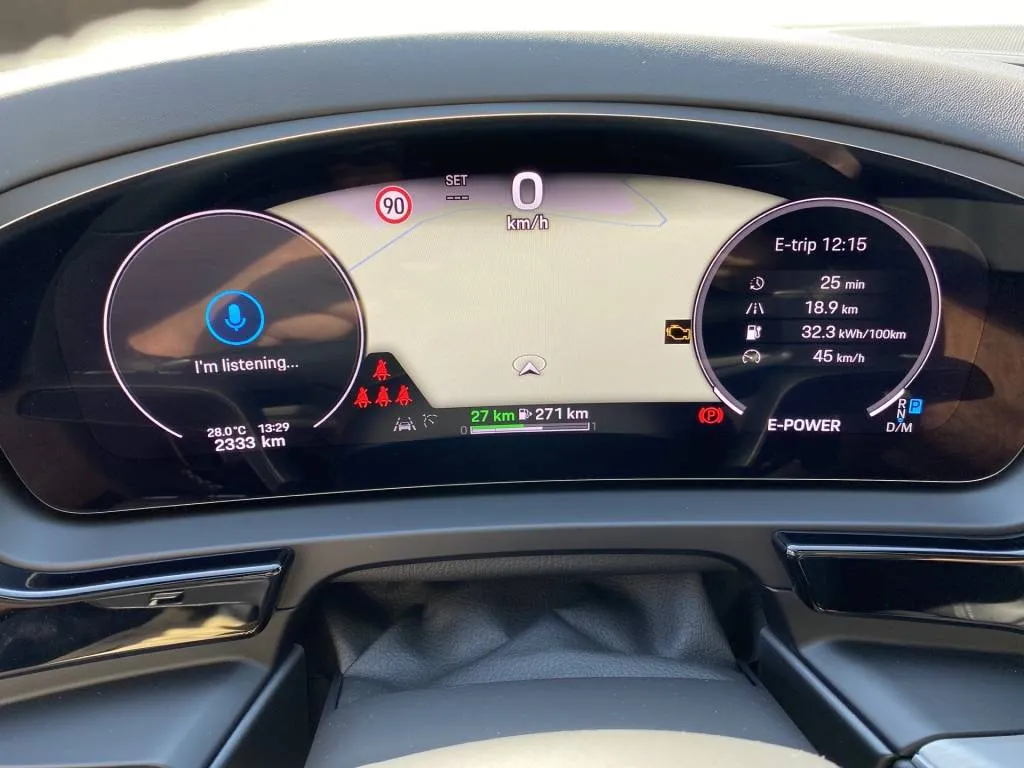
2024 Porsche Cayenne Turbo E-Hybrid
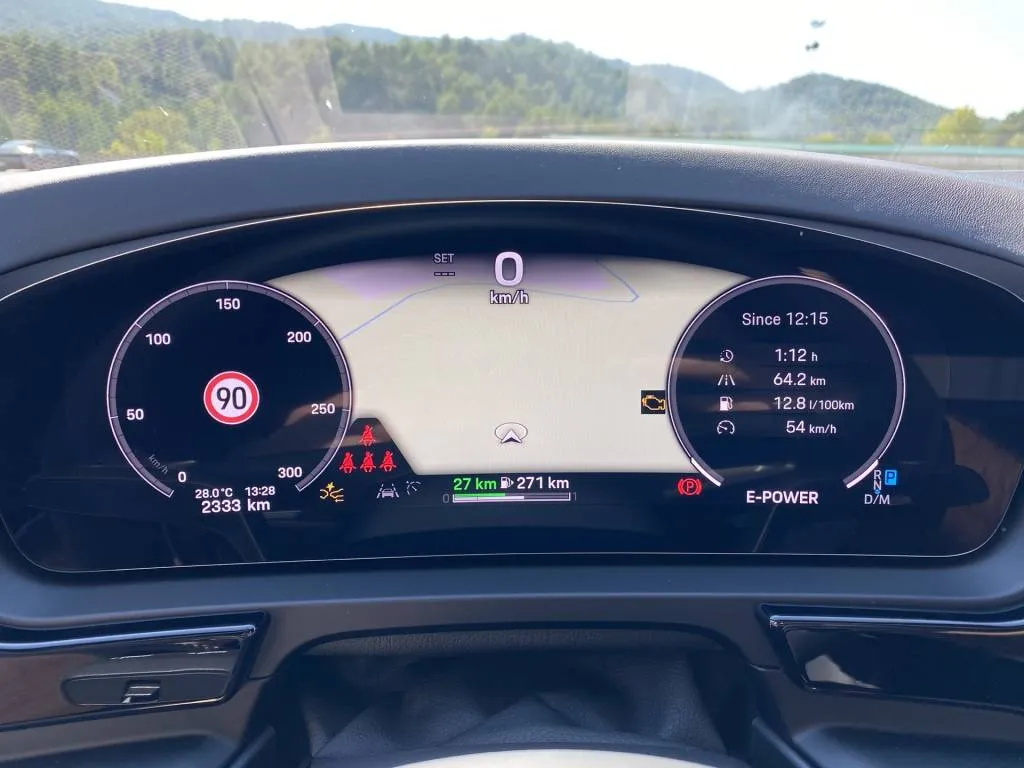
2024 Porsche Cayenne Turbo E-Hybrid
Logging that many miles without burning fuel felt like a bonus. It also showed that I still had 16.7 miles left of range.
There’s no sense estimating a total range from those numbers, as there was a lot of uphill-downhill travel on that route. But it shows the regen was doing its job, and a range of at least 25 miles seems reasonable and very welcome compared to the 15 miles of range on its predecessor.
I expect most drivers to switch the steering wheel control dial to Hybrid mode. There can be a slight hiccup when going from smooth sailing in electric power to hammering the throttle to engage the engine, but smooth inputs result in smooth transitions of power.
Then there are Sport and Sport+ modes that ratchet up the chassis firmness and shift more torque to the rear wheels. Normally, about 60% of the torque goes to the rear wheels, but the system can send more than 50% forward depending on tire grip. For the hairpins and twisties around Montserrat, I mostly kept it in Sport mode. It was a blast, and the rear-wheel steering along with the large wheels and performance tires helped bite into the narrowest turns and quickly correct when a tour bus overwhelmed both lanes in a blind turn.
The new control layout moves the suspension settings into the touchscreen, and the new interface allows for customization of drive modes, chassis response, ride heights, and the sport exhaust system. I mostly let the drive modes on the steering dial handle themselves and relished the sublime steering feel. It feels like a sports car in the hands, yet with the luxurious appointments and cabin space of a crossover SUV, even in Coupe form.

2024 Porsche Cayenne Turbo E-Hybrid
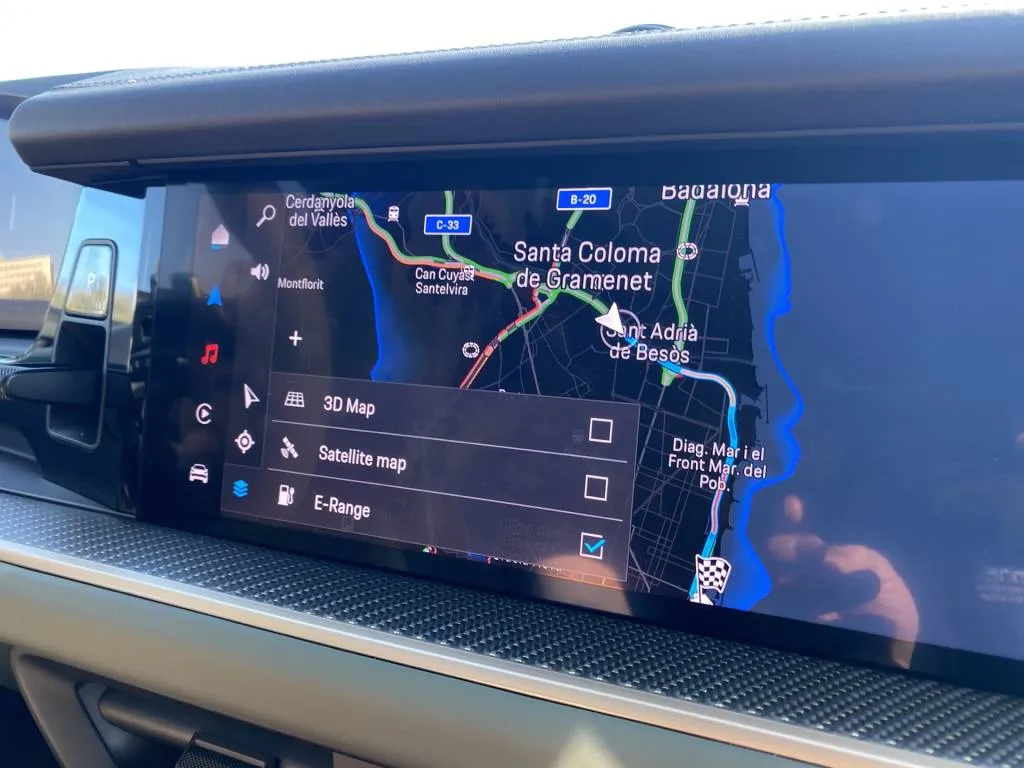
2024 Porsche Cayenne Turbo E-Hybrid
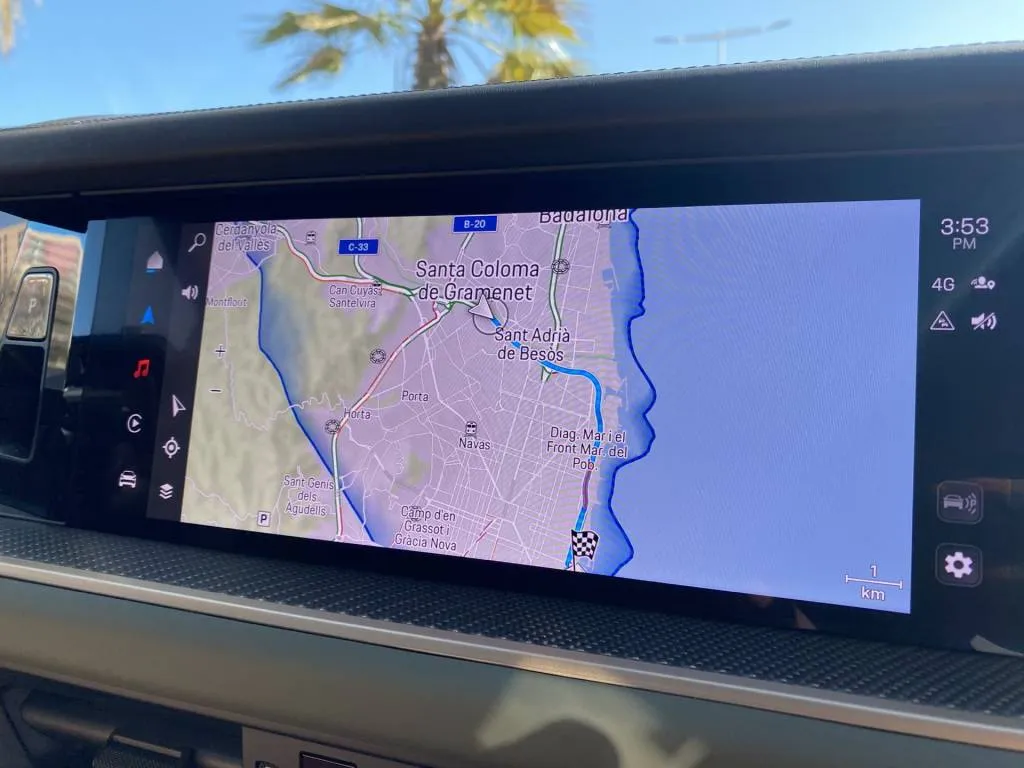
2024 Porsche Cayenne Turbo E-Hybrid
As a navigator, I even used the 10.9-inch passenger touchscreen to aid in directions and searching for other info. At one point, the navigation map was on all three screens: the cluster, center touchscreen, and passenger interface. It might have been overkill, but luxury is all about options.
What was most luxurious was the quiet cabin and serene ride quality on the highway. It made the Cayenne Turbo E feel as much like a touring car as a performance machine.
The screens help Porsche simplify all the buttons, but the haptic climate control panel on the center console could use one more refinement: push the heated seat button, for example, and the whole panel flexes.
The 2024 Porsche Cayenne Turbo E-Hybrid presents a more practical and sustainable approach to performance than the Cayenne Turbo GT model. At $151,400, the new Turbo E-Hybrid Coupe costs $46,900 less than the Turbo GT, or 30% less. It may not match up on the track but you wouldn’t know it unless there were back-to-back laps. Off the track, it’s superior to the Turbo GT, whose days appear numbered, especially when Porsche launches the fourth-generation Cayenne in battery electric form for 2026.
“It always depends on legislation,” Dr. Oerleke said about the future of the Porsche V-8. “As long as we are allowed to homologate a V-8 engine we will do this, because the customers like this.”
Indeed.
Porsche provided airfare and lodging for Motor Authority to present this firsthand report.
